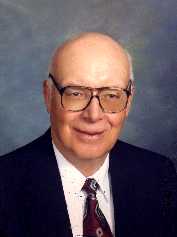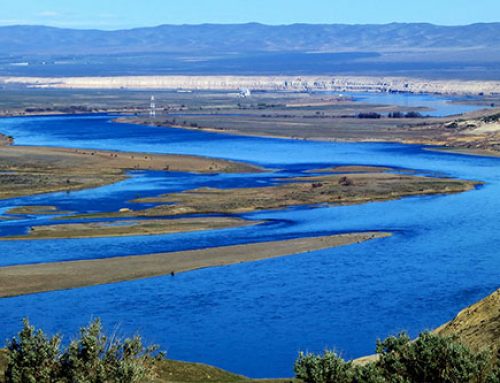B Reactor 70th Anniversary
September 26, 2014 was a beautiful star-filled evening in which to celebrate the 70th anniversary of B Reactor’s start up. And that is exactly what the nearly 250 people did – CELEBRATE – the momentous anniversary of pulling the rods for B’s startup. Read more about this special event >>
70th Anniversary Address by Del Ballard
BRMA’s role in preservation of B Reactor

Let me briefly review the situation here at Hanford at the time BRMA was organized. As the 1980’s ended the Cold War was over, all plutonium production ceased; and plans were being made for cleanup of the Site, which included the disposal of all nine reactors. It certainly was not clear, from either the Environmental Impact Statement or the Tri Party Agreement, which was signed in 1989, that any of those unique, historical facilities would be preserved.
DOE’s non-preservation mindset was a real concern for members of the local Tri-City Technical Council — an umbrella organization of representatives from the 20-some scientific and engineering societies that were active in the Tri-Cities. A committee was formed to consider what could be done to change the decision to dismantle the B Reactor, and also to consider options for converting it into a museum. The committee members were well aware that B Reactor held a very special place in history and had been a major contributor to world history, science, technology and engineering, and that it should be preserved.
The outcome of those initial meetings in 1990 was the formation of the B Reactor Museum Association, which was incorporated in January 1991. BRMA is a non-profit, all volunteer organization. Many of our early members had worked at B or one of the other Hanford facilities, and all were interested in preserving our Hanford history.
In addition to our primary objective of preserving the reactor for historical reasons, BRMA also set goals to increase public awareness, provide educational exhibits, improve highway access to the reactor from the Vantage highway, and add a boat dock on the river for tour boats. Our goal for the establishment of a National Historical Park was established later.
The path to obtaining an official commitment to preserve B reactor was a long and arduous one, but our members were persistent in their determination. As Colleen French has said, “BRMA never gave up.”
A large issue for us all along was that the DOE was not able, or willing, to commit to the long-term operation of the facility as a museum. We all remember the statement from DOE Headquarters that said, quote, “We are not in the museum business.” The DOE position was that others had to be brought on board to perform that function. And then of course it was essential to save B from the wrecking ball and not be cocooned, as was planned for all the other reactors. This was where BRMA pushed so hard to change the government plans and to keep B Reactor intact.
Finally in 2002, DOE issued an interim action statement that basically said they would consider a public use option if a capable partner was found to operate a long-term preservation mission. That was a crack in the WALL for our goal of preservation and eventual museum. Attitudes were changing and support was growing.
In 2003, in a parallel effort, BRMA prepared the initial forms to nominate B Reactor as a National Historic Landmark. Later, that process was taken over and completed by the National Park Service. Following approval by the Secretary of the Interior, National Historic Landmark status was given to the B Reactor in a ceremony held right here (in B Reactor) in August 2008. Also, at that time the DOE announced plans for initiating regularly scheduled public tours. They weren’t quite “in the museum business,” but they were certainly helping to move the process in that direction.
In 2004 legislation was signed for a National Park Service study of the Manhattan Project sites. When a draft of the study was issued for public comments, BRMA and this community were astounded that only Los Alamos was recommended as a fully managed park site. BRMA and our community leaders insisted that without including B Reactor and other Hanford facilities, a complete story of the Manhattan Project could not be told. Thankfully enough pressure was applied to persuade the Park Service to rewrite their document to recommend a multi-site park that included all three of the major Manhattan Project sites — Oak Ridge, Hanford, and Los Alamos.
The next major step was the now-pending federal legislation for the establishment of such a Historical Park. I’m sure that Representative Doc Hastings will tell us more about that in a few minutes.
In conjunction with that pending legislation, which BRMA fully supports, I want to emphasize that in addition to recognizing the production facilities at Hanford, BRMA also supports the inclusion of those pre-Manhattan relics that remain on the Hanford Site. In order to tell a complete story of what happened at Hanford, we certainly need to consider the individuals who were so abruptly removed from their homes and land when the government took over the area in 1943. Those remaining structures that should be included in the Park legislation are the Bruggeman family warehouse, White Bluffs Bank, and Hanford High School.
In separate activities, many of our BRMA members have enjoyed serving as knowledgeable tour guides at the facility; and, while working closely with the Atomic Heritage Foundation, we have been instrumental in providing the three large models now located in the reactor building.
In conclusion, I know that those of us in BRMA are very pleased and grateful that a major portion of our original goals have been meet and that this historic facility has been preserved, cleaned up, and is available for interpretation and enjoyment by everyone. Many thanks to everyone that helped make this happen.
And finally to Congress, please take that next major step and pass legislation that will establish a Manhattan Project National Historical Park.
Thank you all.






